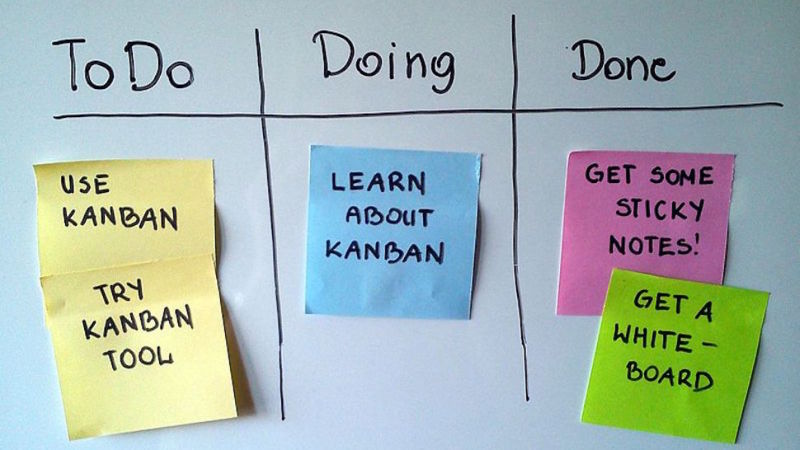When it comes to household chores, it’s nearly impossible to remember what you started, who’s supposed to be doing what, and what’s still left to do. So you end up with a half-cleared out freezer, a vacuum that coughs out dust clumps (“Wasn’t Bob supposed to empty this thing?!”), and a general feeling that everything is always awry.
Photo: Dean Hochman/Flickr
You need a visual. You need a system. You may need a Kanban.
Explained in Jim Benson and Tonianne DeMaria Barry’s book Personal Kanban: Mapping Work | Navigating Life, a Kanban is a simple system for managing your to-dos. For a primer on how it works, read our guide to using Personal Kanban.
[referenced url=”https://www.lifehacker.com.au/2015/02/productivity-101-how-to-use-personal-kanban-to-visualise-your-work/” thumb=”https://i.kinja-img.com/gawker-media/image/upload/t_ku-large/epkj2ttlyvqug5nwrzo3.jpg” title=”Productivity 101: How To Use Personal Kanban To Visualise Your Work” excerpt=”The best productivity methods keep your to-dos in front of you and prioritised so you never wonder what to work on next. Some are complicated, but others are organised simply by priority — so easy you could use sticky notes if you wanted. Let’s talk about one of those systems. Personal Kanban.”]
The system can be implemented for household chore management using Post-Its that you probably have sitting somewhere in your Terrible Drawer. (First task to add to your Kanban: Clean out the Terrible Drawer.)

To start, create a chart with three vertical columns: To-Do, Doing and Done. You can use a board or a wall, as long as it’s in a spot that you can’t avoid. One woman in a home organisation group I’m part of displays her Post-Its directly on her kitchen cabinet doors so she’ll be face-to-face with them every day.
Write down one chore per Post-It and stick the tasks in the To-Do column. You can always add more as you think of them later. You will always keep adding more. As soon as you think of a chore that needs to be done, get it out of your brain and onto a Post-It.
Use different coloured Post-Its for different household members, or to highlight higher-priority tasks (for instance, anything that is starting to smell). Move the tasks over to Doing and Done accordingly. Feel proud. You have a system.
But wait. There is a Kanban “rule”. It’s important to limit the number of tasks in progress so you don’t get overwhelmed. A rule of thumb is that no one should have more than three tasks to work on at the same time. You might want to start by having no more than one or two tasks in progress to get a feel for the system.
A few Kanban upgrades to involve kids:
Kids can and should do chores, and it’s easy to make them a part of the system. Give them their own special colour and assign them age-appropriate tasks (for example, very young children can put away toys, while tweens can mop the floors or do laundry).
To make things even more interesting, you can put dollar values on each task so that a child can pick up some extra pocket cash. Or you can offer a prize when a child or team of children get all of their Post-Its to the “Done” finish line. It’s a way for kids to see that everyone has a job, and that there’s always more work to be done.

Comments